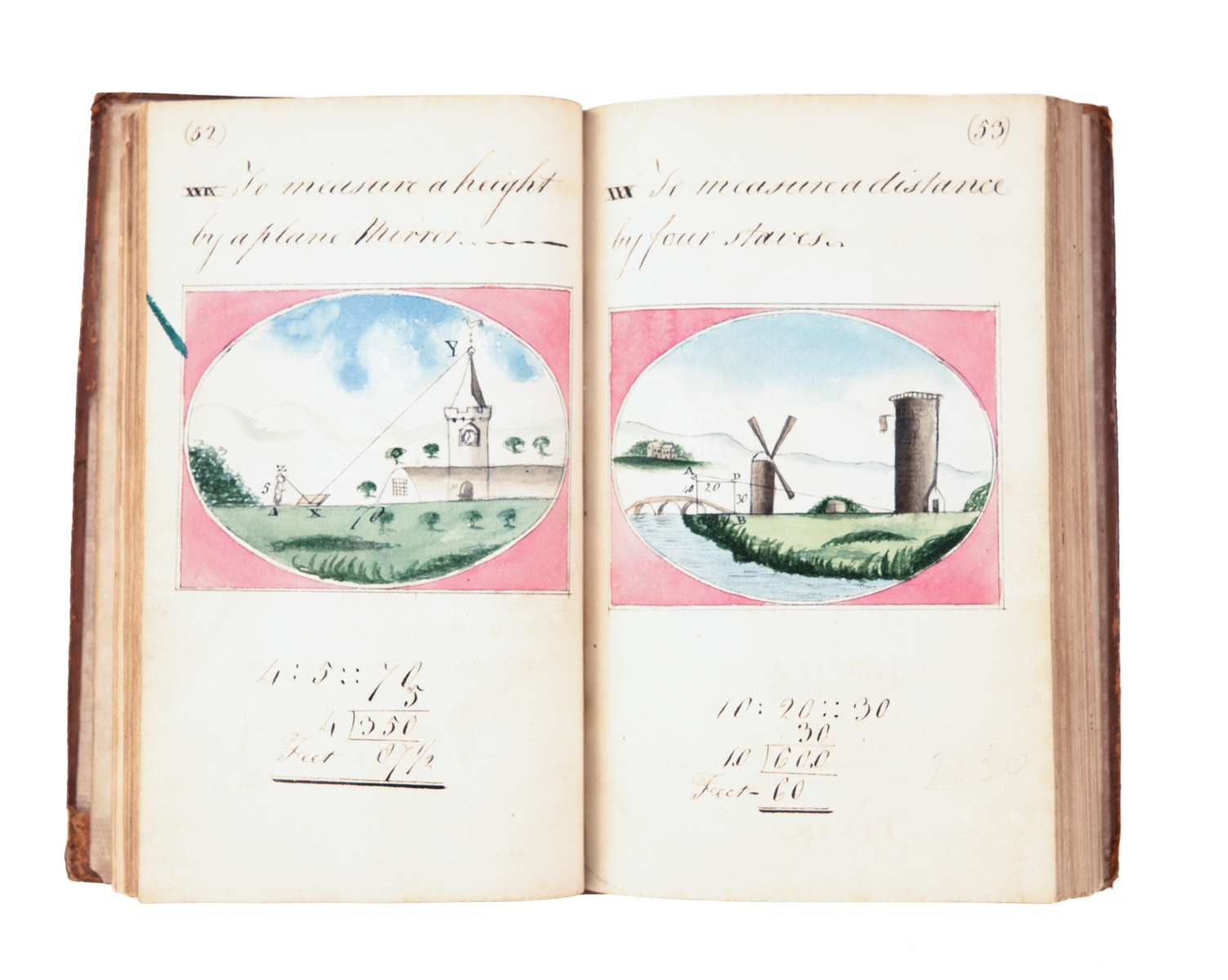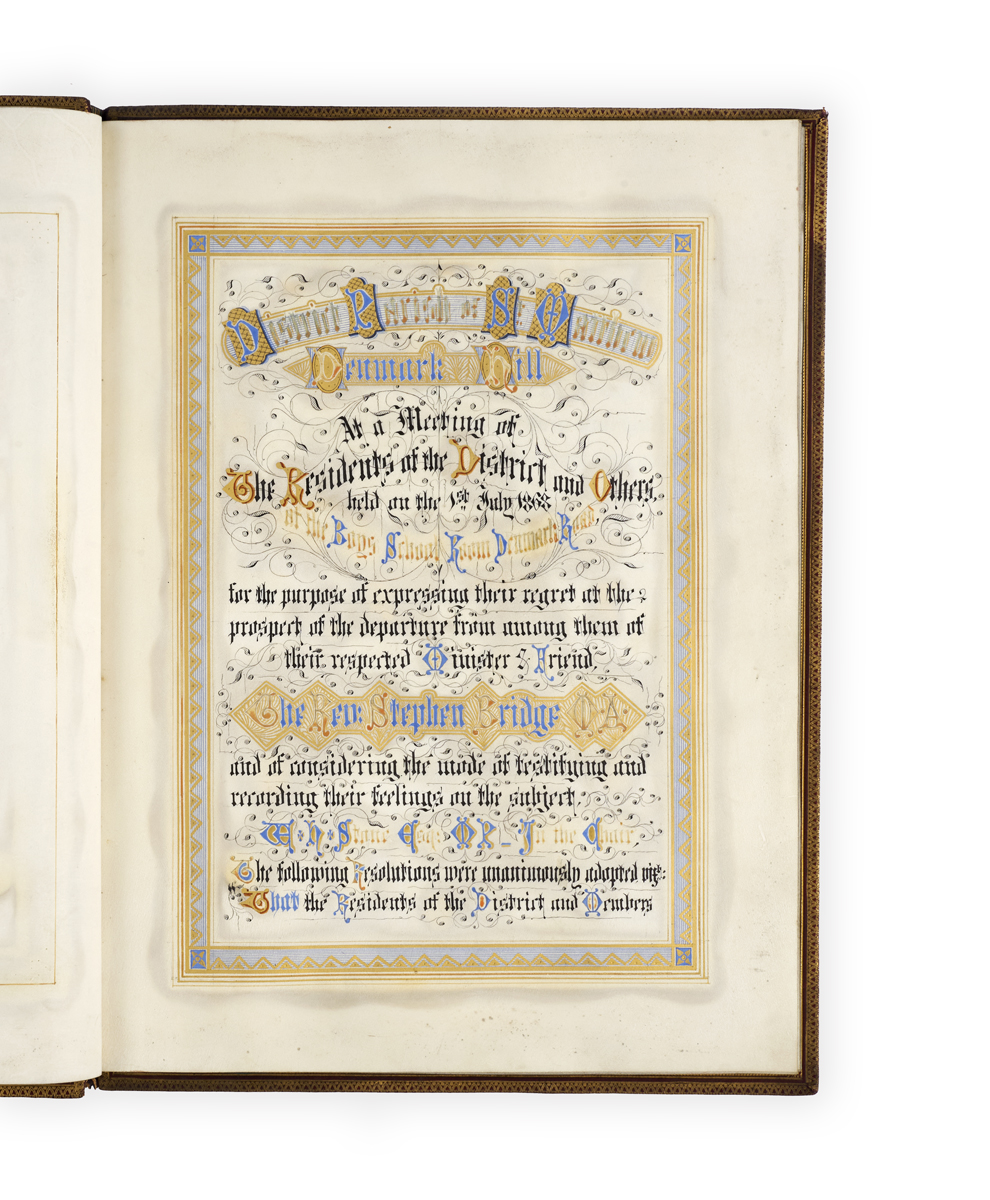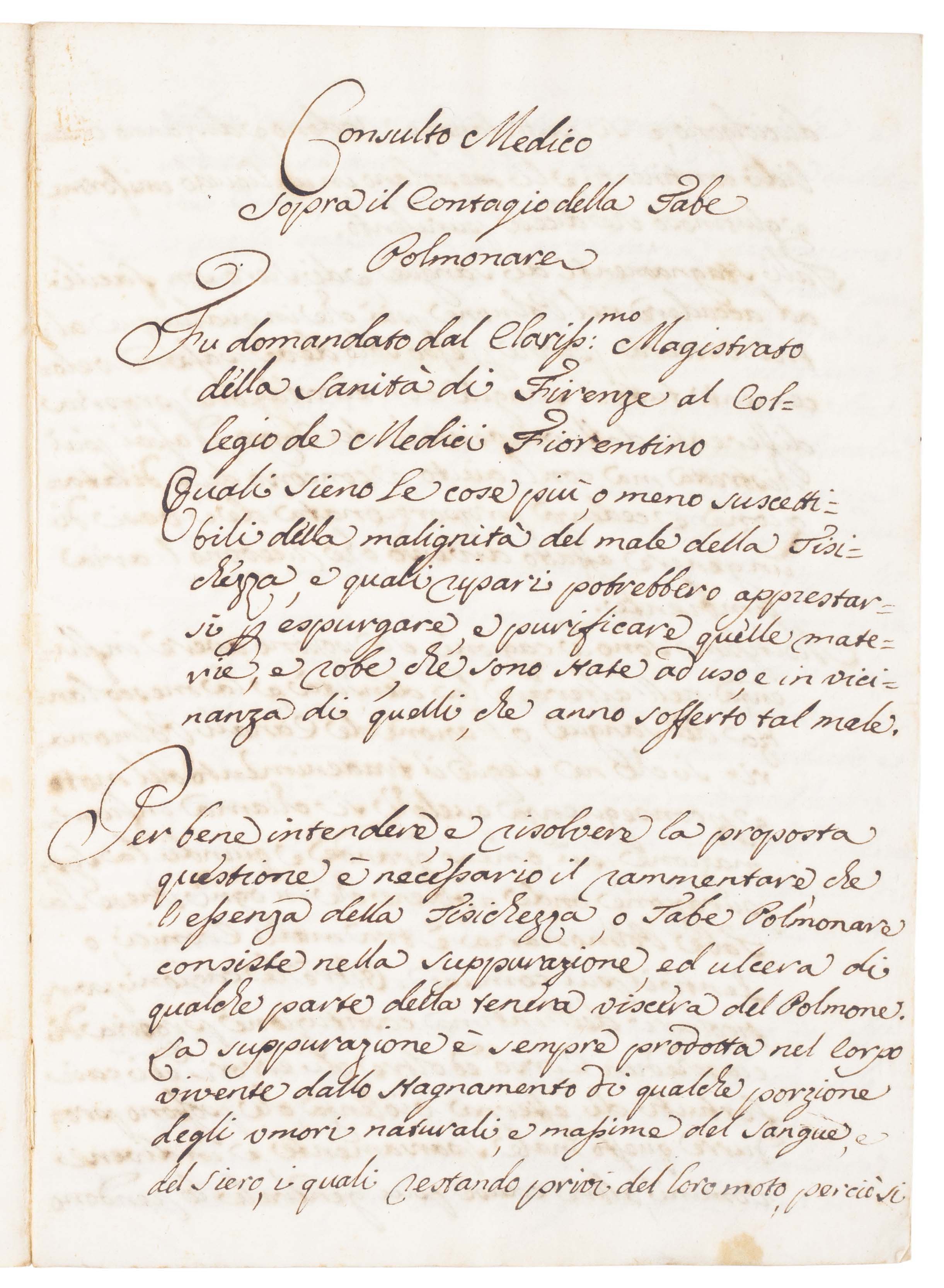
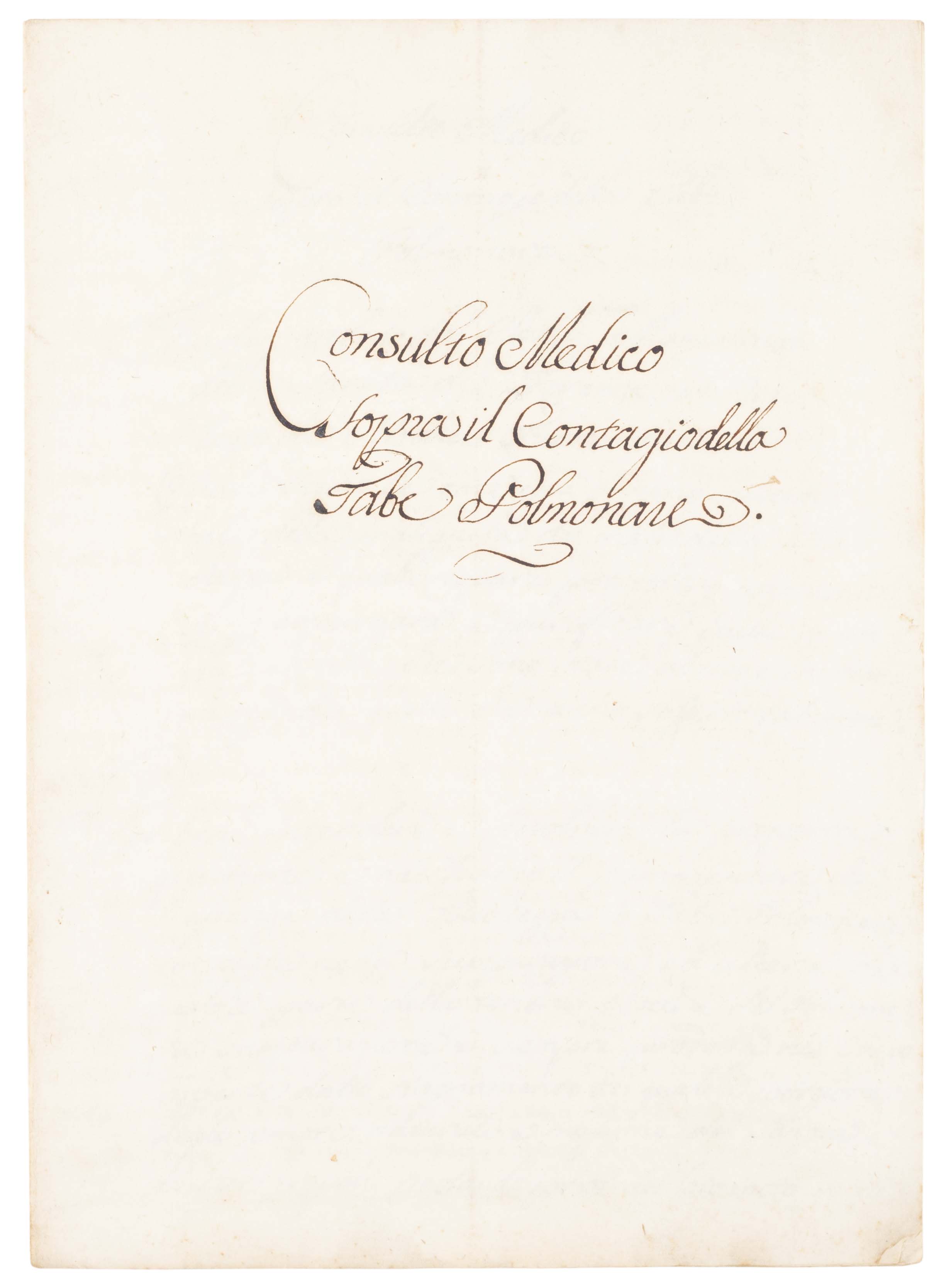
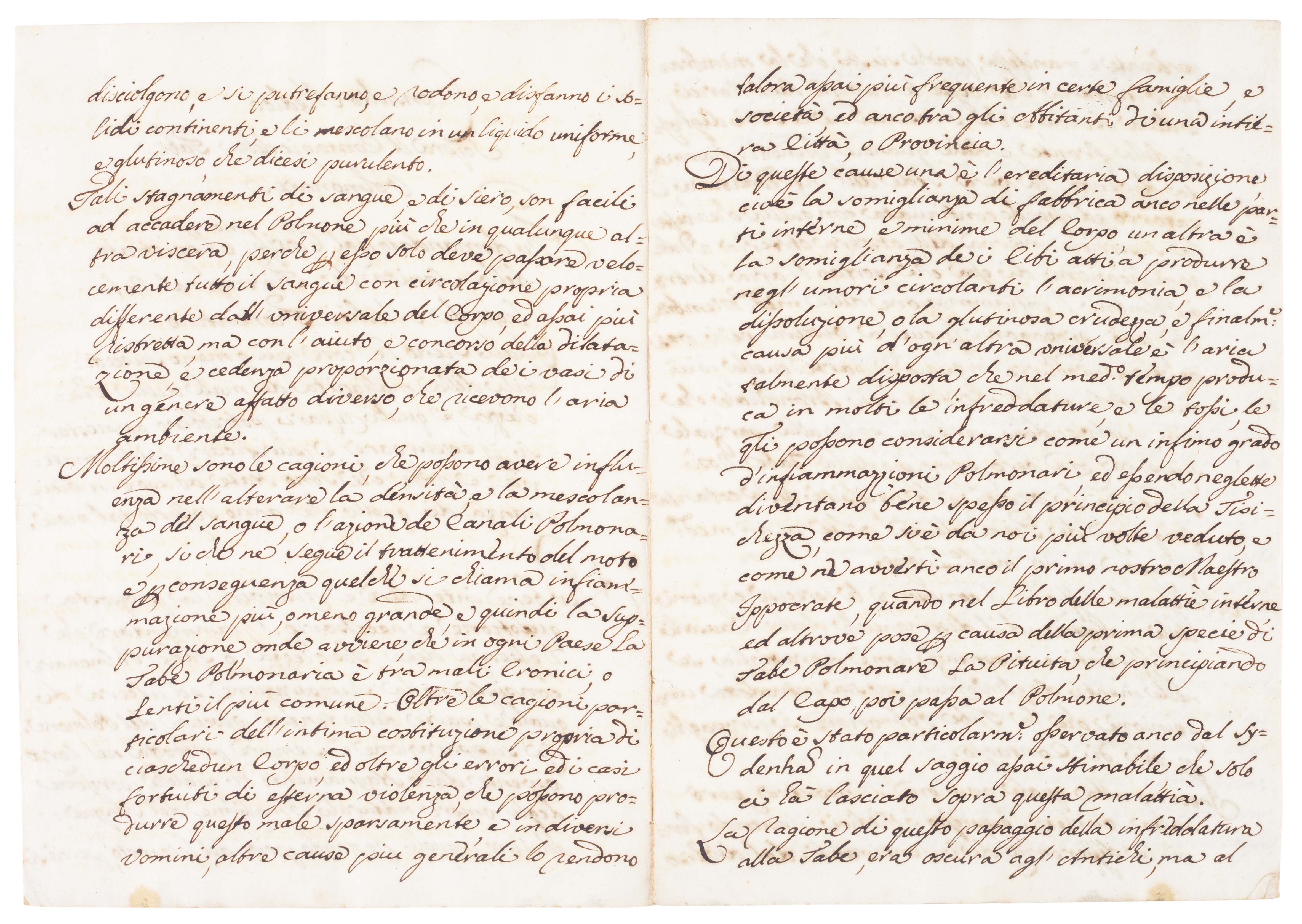
TIPS ON TACKLING TUBERCULOSIS
COCCHI, Antonio.
‘Consulto medico sopra il contagio della tabe polmonare’.
‘Florence, 1753’.
Folio (27.5 x 20 cm), pp. [2, title], [17, text], [1, blank]; manuscript on paper, in Italian, neatly written in black ink in a single hand, up to 26 lines per page, dated at end ‘In Firenze dalla Residenza del Collegio de Medici a di 29 Xbre 1753’; a few light marks, small marginal paper flaw to last leaf; very good; unbound.
An attractively written manuscript copy of this important medical report on pulmonary tuberculosis composed for the health authorities in the city of Florence by the eminent physician Antonio Cocchi (1695–1758) on behalf of the city’s medical college.
After considering whether tuberculosis is contagious, noting the various opinions of ancient and modern writers, Cocchi here makes several recommendations regarding hygiene: that those suffering from consumption should be kept in clean, well-aired rooms, with whitewashed walls; that their beds should be washed and changed regularly, their clothes and bed linen thoroughly cleaned and dried, and their mattresses beaten and brushed; and that they should only spit into spittoons of glass or glazed earthenware, which should be frequently scrubbed and replaced. Cocchi also identifies several causes of tuberculosis, including chest strains, unhealthy food, and coughs and colds left untreated. Cocchi’s recommendations prompted the Florentine authorities to pass several measures to tackle tuberculosis in November 1754.
The Consulto was printed in the Magazzino Toscano d’Instruzione e di Piacere at Livorno in 1754, and subsequently appeared in Dei Discorsi Toscani del Dottore Antonio Cocchi (Florence, 1762). It clearly circulated in manuscript too, as this copy, and another dated 1791 recorded on OPAC SBN as preserved at the Biblioteca Moreniana in Florence, demonstrate.
